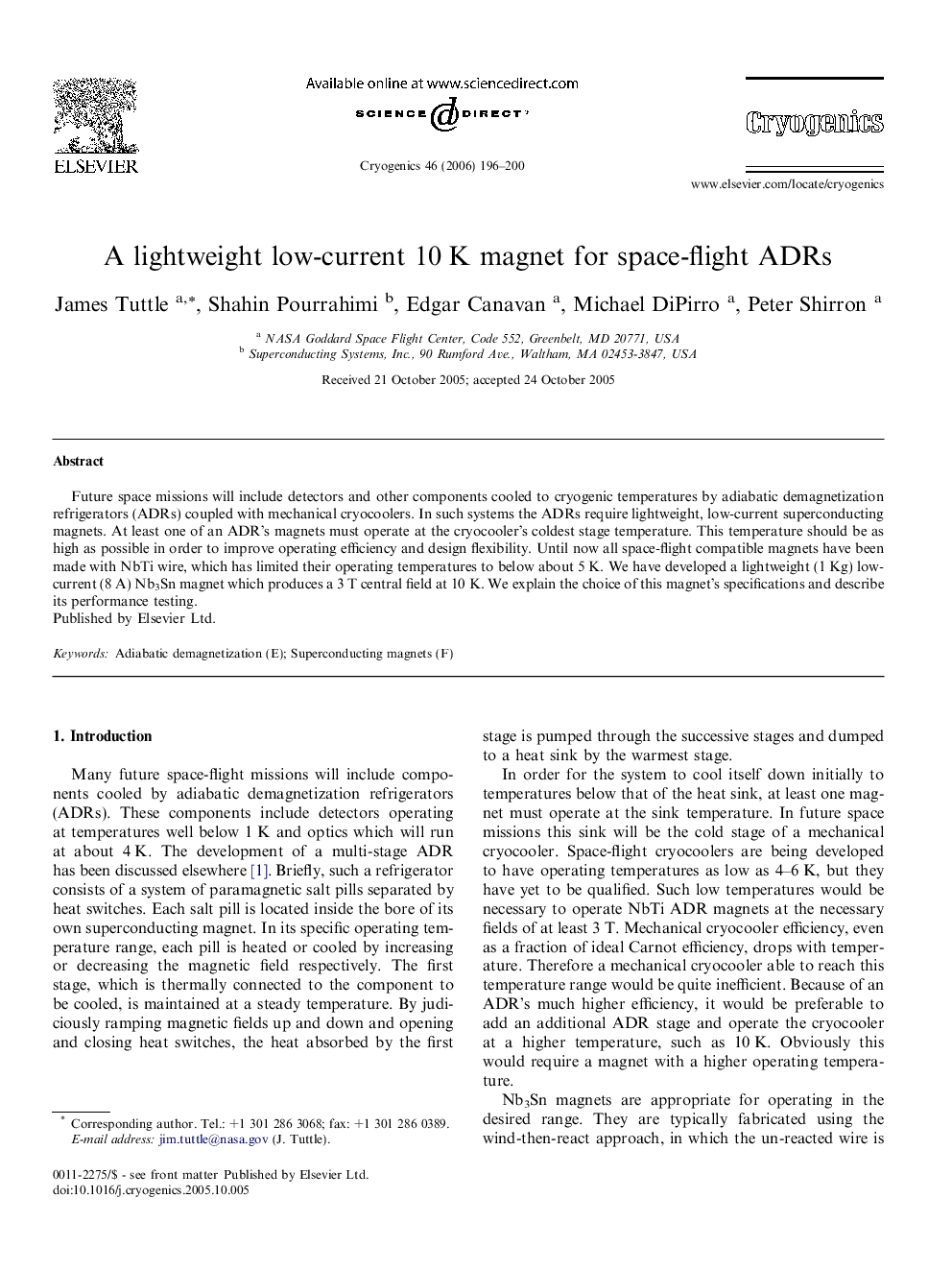| Article ID | Journal | Published Year | Pages | File Type |
|---|---|---|---|---|
| 1508593 | Cryogenics | 2006 | 5 Pages |
Abstract
Future space missions will include detectors and other components cooled to cryogenic temperatures by adiabatic demagnetization refrigerators (ADRs) coupled with mechanical cryocoolers. In such systems the ADRs require lightweight, low-current superconducting magnets. At least one of an ADR's magnets must operate at the cryocooler's coldest stage temperature. This temperature should be as high as possible in order to improve operating efficiency and design flexibility. Until now all space-flight compatible magnets have been made with NbTi wire, which has limited their operating temperatures to below about 5Â K. We have developed a lightweight (1Â Kg) low-current (8Â A) Nb3Sn magnet which produces a 3Â T central field at 10Â K. We explain the choice of this magnet's specifications and describe its performance testing.
Keywords
Related Topics
Physical Sciences and Engineering
Materials Science
Electronic, Optical and Magnetic Materials
Authors
James Tuttle, Shahin Pourrahimi, Edgar Canavan, Michael DiPirro, Peter Shirron,
